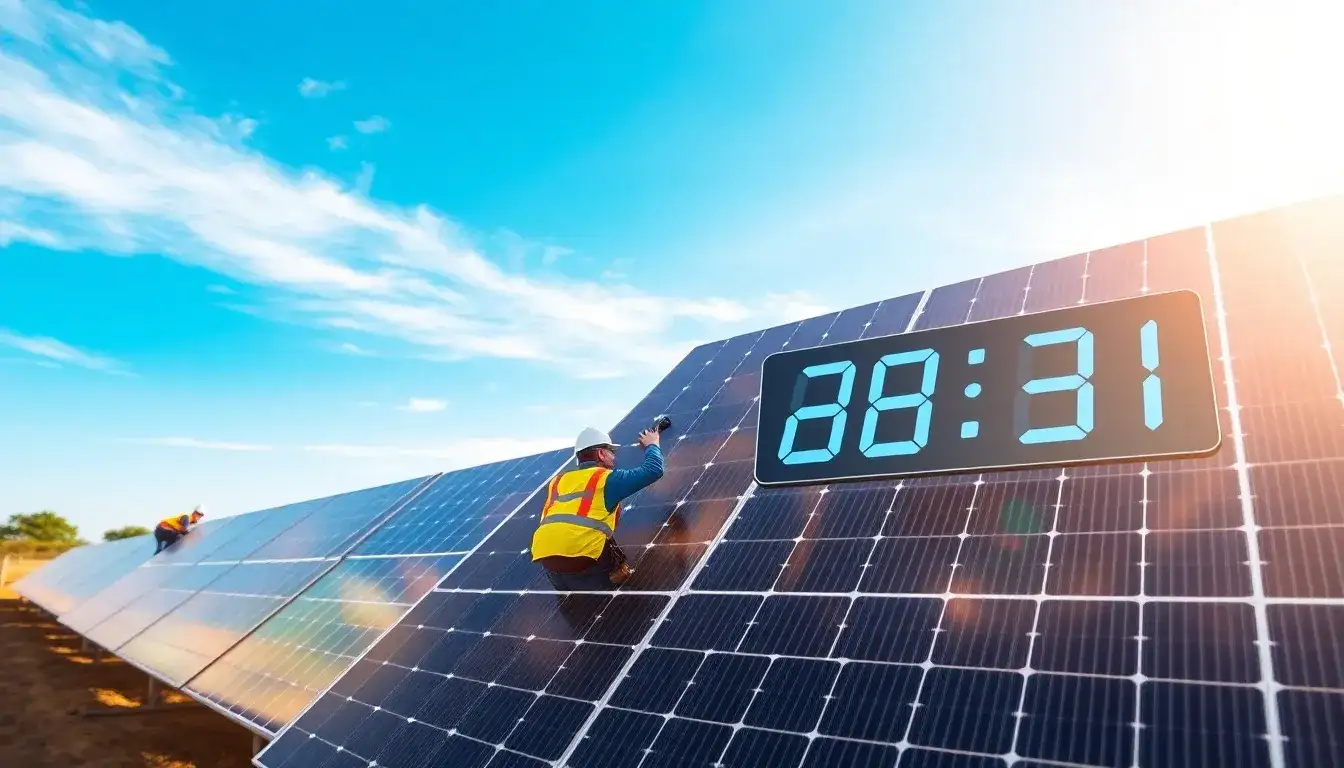
Race to Complete Solar Projects Before Key Deadlines
As the solar industry approaches critical deadlines, it is experiencing a surge in sales. The rush to install solar panels has pushed the price of mainstream components close to 0.8 yuan/W, a notable increase from around 0.7 yuan/W in January 2025.
Industry experts anticipate that the profitability of solar power stations will decline for projects completed after April 30 or May 31, making it essential for developers to expedite installations.
Leading component manufacturers are adopting strategies to either follow market trends or secure long-term orders in response to this installation rush, while also preparing for a potential drop in demand after June 1.
Solar power developers are planning to lower channel fees and installation costs to mitigate the expected decline in returns due to price adjustments. Some installers are considering temporary layoffs or stepping away from the industry until market conditions improve.
After a year of excess inventory, solar component distributors are suddenly struggling to secure supplies. One distributor reported that despite placing an order, the factory allocated their stock to another client. To avoid losing customers, they negotiated with the factory, ultimately receiving their products after multiple price increases.
In March 2025, the solar industry saw a spike in sales, with one installer noting that their current project volume is three to five times higher than the same period last year. The urgency is driven by the need to complete installations before the upcoming deadlines.
The terms “430” and “531” refer to key policy dates released in mid-January and mid-February 2025, respectively. Industry consensus is that projects finished after these dates will yield lower returns, prompting a rush to complete installations quickly.
Some leading component manufacturers are cautiously maintaining their production capacities to optimize utilization rates in light of the current demand surge. Solar power developers are also reassessing their profitability models and exploring new operational strategies in anticipation of decreased returns.
Installation Rush and Project Compliance
One installer promised potential clients that they would deploy multiple teams to ensure project completion on time, humorously noting that continuous 24-hour work is not legally permissible. This company has begun acquiring solar projects from investors eager to connect before the upcoming deadlines.
The construction of solar power stations typically involves three phases: registration, construction, and grid connection. Registration requires submitting project documents to relevant authorities to obtain approval, followed by construction, and finally, grid connection verification.
The process usually takes between one month to six weeks. With only two months remaining until the “531” deadline, installers are confident in their ability to complete installations on time.
However, the rush for installations is impacting the registration phase as well. A developer from a northern province reported that obtaining project approvals has become challenging due to overwhelming demand. Local authorities are struggling to keep pace with the rising number of project applications.
Once registration is secured, developers must adhere strictly to detailed construction plans. Unfortunately, rising prices and shortages of materials have forced some projects to alter their plans.
As demand surges, second-tier solar component manufacturers are running low on stock and are sourcing from less well-known third-tier companies, leading to a situation where even substandard components are being purchased to meet urgent needs.
Market Dynamics Post-Policy Changes
In January 2025, the National Energy Administration released guidelines differentiating between new and existing solar projects based on deadlines, establishing new rules for projects connected to the grid after these dates. Projects completed before April 30 are still eligible for full grid connection; however, those completed afterward face restrictions based on their capacity.
The subsequent policy announcement in late January further emphasized market-based pricing for solar electricity. This means that projects completed after June 1 will be subject to new pricing structures, affecting their profitability significantly.
Industry analysts are predicting a shift from traditional revenue models based on fixed pricing to more complex market-driven pricing structures, which could lead to less predictable returns for solar power stations.
For instance, the average market price for electricity may fluctuate, impacting the profitability of solar projects. Some regions have already seen significant price variations based on solar output, with midday prices dropping dramatically during peak production hours.
Preparing for Future Market Challenges
While the current installation rush may help companies clear excess inventory and boost short-term performance, firms must remain vigilant regarding potential demand declines post-June 1. Many leading component manufacturers are adopting strategies to navigate these changes, balancing immediate market demands with long-term sustainability.
Some are opting for flexible pricing strategies to maximize profits while managing production capacity. Others are locking in long-term orders at fixed prices to ensure stable revenue despite market fluctuations.
For many second-tier manufacturers, this rush presents an opportunity to regain market presence and improve cash flow. As the industry recalibrates, developers are also discussing adjustments to their investment strategies to adapt to the evolving market landscape.
Some developers are exploring new models, such as virtual power plants, which would allow them to focus on energy sales rather than just project development. This shift could represent a significant change in the operational focus of solar power companies moving forward.
In conclusion, while the current rush to install solar infrastructure is a response to impending deadlines, it serves as a crucial moment for the industry to pivot and adapt to the new market realities that will emerge post-531.







